CALVIN KLEIN
A legend, an icon, and an American champion of minimalism; Calvin Klein tells all to renowned writer George Wayne about his rise from growing up in the Bronx to becoming an international brand.

Interview by George Wayne | All Images Courtesy of KCD Worldwide and Rizzoli
© Steven Klein
He was born Calvin Richard Klein, a Hungarian-Jewish spawn out of the Bronx, New York in the 1940’s. This, the very same Calvin Klein, who was also the college dropout, after failing to graduate from New York’s Fashion Institute of Technology. And whose father owned a grocery store in Harlem and gave him that first $10,000 loan in 1968 to start his forever iconic fashion brand – Calvin Klein.
The fact that this All-American icon long sold his fashion business more than 14 years ago and no longer has any involvement with the brand Calvin Klein whatsoever is all in-consequential. For he still remains, to this day, that legendary force majeure! The real Calvin Klein remains that indispensable, and unequivocal – and undeniable master of our popular culture, and hence our zeitgeist!!
The debut of his coffee-table photo book CALVIN KLEIN this September will be an immediate collectible and the closest thing this notorious perfectionist and privacy obsessed legend will be willing to parse as a quasi-memoir or autobiography. As such it was very much a special and joyous moment for this particular arbiter to now be able to declare that the tête-à-tête that follows with Calvin Klein is a seminal moment. It was sheer master-class and brimming with CK revelations galore!
Calvin was breezy and open with the absolute funniest and most priceless anecdotes…and so without further ado…Here’s the man who has done it ALL, Calvin Klein.
 Volume One, Rebellious, cover image of Kate Moss, 1993, ©David Sims ; Volume Two,
Volume One, Rebellious, cover image of Kate Moss, 1993, ©David Sims ; Volume Two,
Calvin dearest. I suppose the first and most obvious query here would be WTF took so long?! I am sure this idea of a coffee table book legacy from the icon that is the real Calvin Klein has been germinating for decades. So why only now?
Well, I’ve thought about it on and off, as you said. Not for decades, but I thought about it after I sold the company and after I stopped contributing to the company, because I did that for a number of years. Then I took on projects that seemed to me more important at the time. I worked with the Harlem Village Academy. That’s a group of charter schools in Harlem. I did a lot of work giving them an image, setting up website, uniforms, doing all kinds of things, and that took a couple of years to do. I also was working on my New York apartment, which took four years to complete.
Right, right…
When I worked – I worked 24/7, and I was thrilled to do it because I loved the work. Quite frankly, doing this interview with you is exactly what I would have done if I was coming out with a new fragrance or a new product line, and it’s my way of communicating to people what we’ve created and why. And also, working with the most creative people I could find – photographers, art directors, models, stylists, to do something that explains what I was trying to communicate…the product, but also do it in a very creative, fun, exciting, and sometimes, often, provocative way.
There is no question that this new Calvin Klein coffee table book is destined to be an instant collectible! And it it so Calvin! The spare, white cover and the simple unassuming typeface. Was Calvin hands off with the design, and more importantly the images that made the final cut? Was it all left up to your longtime Creative Director Fabien Baron? We all know Calvin is the ultimate control freak so this is hardly the most profound question!
George, let me start from the beginning. Anna Wintour and Kelly Klein, my ex-wife, whom worked with me on the book a great deal, as she had worked with me on editing the original images that we did from the ‘70s on. They both convinced me I have to do this. The reason I felt I had to do it is because I speak a great deal at universities. Cambridge was one that I had a very good experience with this year, Oxford in the UK, I’ve spoken to the Architectural School at Harvard and the Business School at Harvard. I’ve touched on so many different areas from fashion design, to beauty products, to the world of jeans where we did so many different things, in addition to advertising and marketing, package design…and saying something through words, as well as visuals that would be exciting. What I realized, going to universities, is that the people I’m speaking to, they know the name. The name became world-renowned before the internet even existed, but they don’t always know exactly what I do because they weren’t born. I’m speaking to 20 year olds, and I’m also speaking to businessmen who want to be global. Which was another thing we managed to do before the internet! This book is really the story of my life.
And I love it!
I wrote introductions to each section and I ended with the section that has stories, which has photos, and why we did the photo, how it went, and all that influence it had on our pop culture.
What I really loved seeing were the gorgeous, sexy images of the younger Calvin Klein interspersed throughout the book. Because for this arbiter those images, to me, truly defined exactly what you were always trying to do with your campaigns throughout those many decades. Those images of you truly defined The Calvin Klein DNA. That summed it all for me.
Thank you. I spent over a year just going through 40,000 images in my archives. And then I narrowed it down to…I don’t know…500, 600 that I then sent to Fabian Baron and said, “These are the images that I feel are important to say what I want to say.” Fabien Baron is a genius that I’ve worked with for years. He said, “You know, I see the different side of Calvin.” He said, “There’s that minimalist side that runs throughout the collection. It is so pure, and sensual, and sexy, but in a very subtle way.” And then he said. “Then there’s the provocative and controversial side,” he said, “where we would do things like…it started with Brooke Shields, you know, ‘Nothing comes between me and my Calvin’s.’”
Hello! And that is where Calvin Klein as the agent provocateur all began! It was that legendary…did I say legendary and forever iconic campaign of yours With the prepubescent Brooke Shields and nothing coming between her and her Calvins. Recall those early days for GW…
The news media picked it up around the world. There was so much publicity over the fact that we provoke people and used a very young-looking Brooke Shields to portray different roles. A lot of people thought it was brilliant and funny, and other people were truly offended. I never set out to create controversy, I promise you.
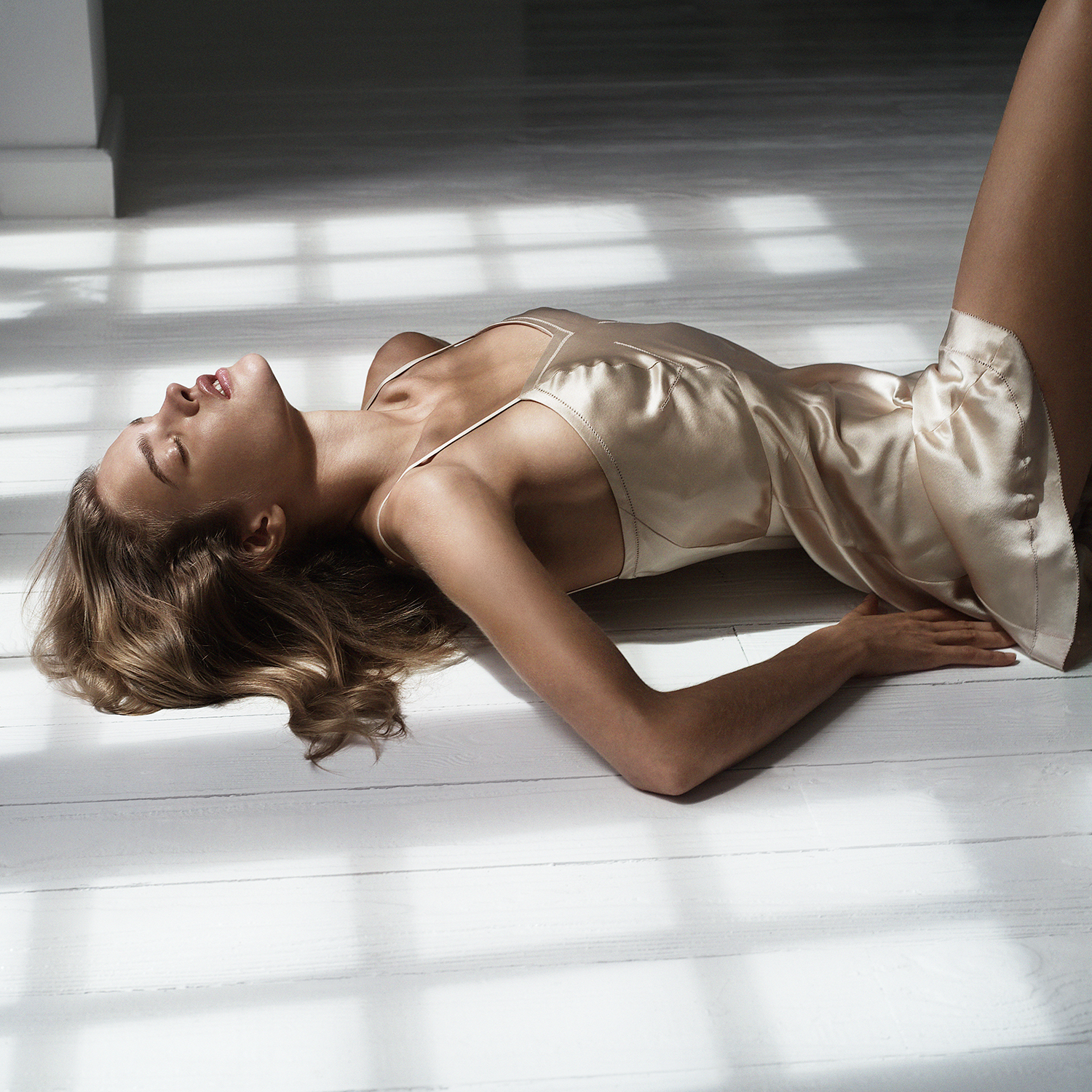 © Mario Sorrenti, Natalia Vodianova, St. Barts, 2003
© Mario Sorrenti, Natalia Vodianova, St. Barts, 2003
Unlike today when creating viral internet controversy to achieve fame and fortune is the typical modus operandi. Calvin – you did all this before there was YouTube! You, in fact, presaged all that and, in fact, set the template for what is now the norm here in the 21st Century!
I just wanted to do the best work I can do and make it exciting…and, yes, there is that side of me that loves to party – years ago during the Studio 54 years. There is that side of me that appeals to eroticism, but most importantly, is the side of me that’s more minimalist, because that comes through in my homes, in my selection of how I live – furniture – how I arrange flowers, for how I design clothes. That minimalist aesthetic was always really important, and from that, then I wanted to tell the story of what I was trying to say in designing these things, and that’s where the campaigns came in. That’s where my collaboration with Bruce Weber began.
Tell me about that. Tell me about that time, because Bruce Weber was so much a part of the pedigree and heritage of the house of Calvin Klein.
I always had this affection and passion for photography. It seemed normal to me that if I’m creating the product, whether it’s fragrance or fashion, that I would know who the right photographer is to communicate that message, who the model is and where the photoshoot should be done. I would be on the phone with Bruce Weber three, four, five times a day and we would be discussing every aspect of the upcoming shoot, but it always started from one question, and that was “what is the meaning of this product?” He would say, “Calvin, what are you trying to say?” And from that threw us into trying to do something new, exciting, and interesting. We pushed the envelope, for sure, but I didn’t set out to push the envelope. In fact, when you work with very creative people, it’s a natural process. I was always willing to take risks.
Well, that’s for sure! (Laughter). Calvin, you said in the introduction to the book… “I’m a non-conformist by nature.” How old were you as a kid in the Bronx and first realizing that you were nonconformist by nature?
I was born in the Bronx. It’s part of New York, of course. From the age of six, seven, I was drawing and sketching. My grandmother worked for a designer as a dressmaker. My mother knew how to draw and sketch, and she had a passion for clothes. There’s even a photograph in the book of my mother, father, and myself – and I’m wearing leggings…leather leggings with a tweed jacket or something! My mother…her life was about fashion, and a particular kind. That’s where I got this minimalist thing. She was very sophisticated and very tailored. In this photograph that’s in the book, she’s wearing a Persian lamb coat, she’s wearing pants, and flat shoes.
So you came from that?
And this was in the 1940s!
What I am saying, is that your basic style element came from growing up with two obvious ‘’Fashion Bessies’’– Calvin!. Every pun intended…it was clearly in your genes!
That’s very funny. The truth is now I can explain that to people because no one… When we did imaging or product development, you end up with what you end up with, and you hope people like it as much as I did, but they don’t know what the vision was. They don’t know where it came from, and my childhood. They don’t know the story of my life. I’ve done a lot of interviews over the years, but we would always talk about what we were creating and what was new and different. Rather than…this is a boy who was influenced at a very early age by his grandmother and his mother.
‘’New York City in the ‘70s and ‘80s was the most exciting city in the world,’’ you also say in the book…
Yes.
But what are your thoughts of the city that made you an international icon here and now in the 21st Century? For GW – Calvin Klein is the quintessential New York City icon!
I’m a true New Yorker. I was born in New York. I went to schools – at Art and Design High School, the Fashion Institute of Technology for college – everything that I did, I was influenced by my surroundings. New York, whether it was the ‘70s and ‘80s, which was such an exciting period. It was like Paris in the 1930s. Berlin was another city. New York had it, I think, in the ‘70s and ‘80s, but New York still has it. It’s still a center, magnet for creativity. That’s, today, it’s no different. Often I’m asked if, with the internet and all the changes of technology, could I have done what I did today. I truly believe that I could, because those things are all tools to make you more creative and to reach out to the world more easily, but in the end it’s about the product, it’s about finding something that people didn’t know they needed, but they do. Once they see it, then they know they would like to have it. It’s the combination of everything that I enjoyed being a part of. There wasn’t anything that ever had my name on it that I didn’t see, approve, or change, or help create from the very beginning, the middle, and the end…always.
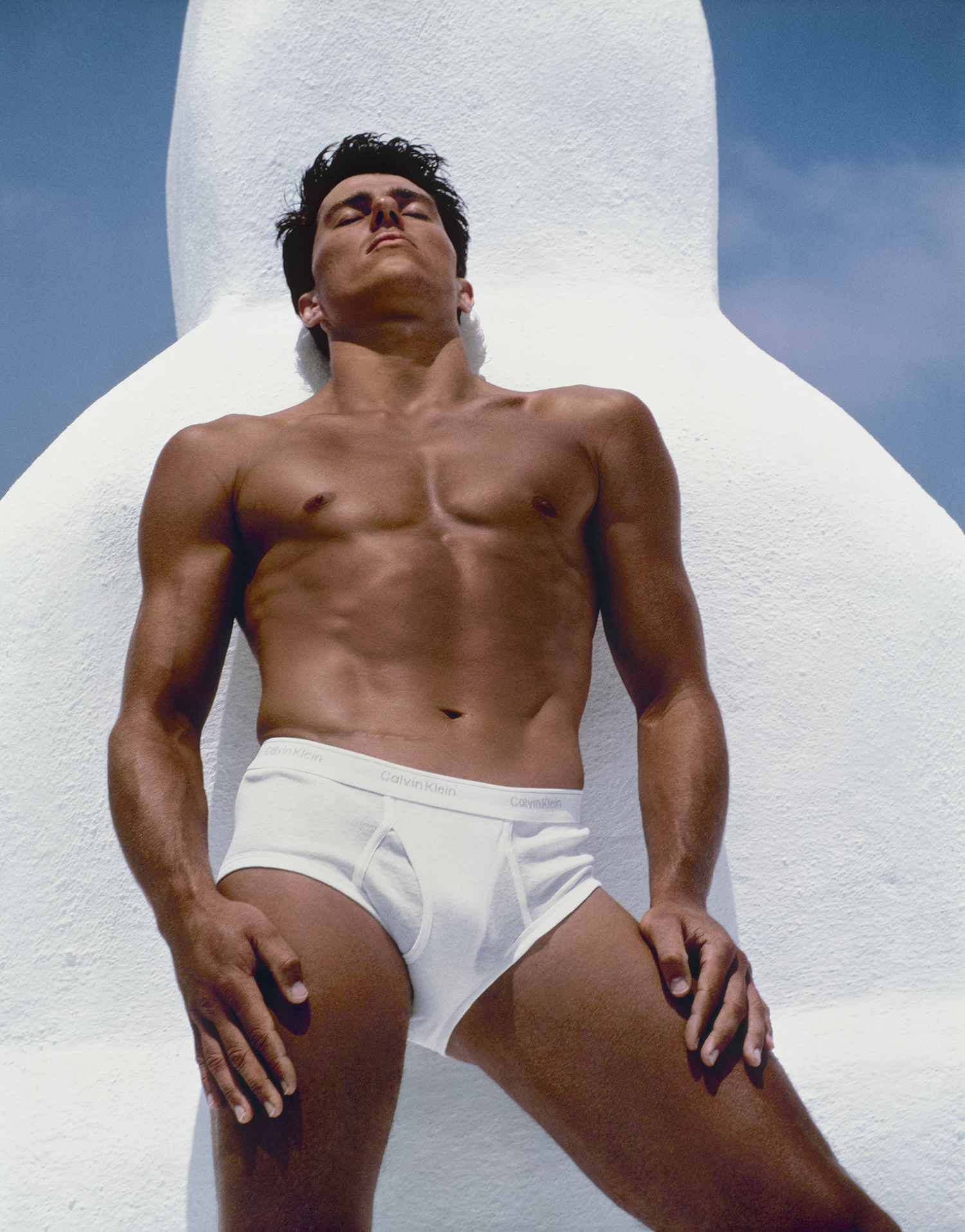 © Bruce Weber, Tom Hintnaus, Santorini, 1982
© Bruce Weber, Tom Hintnaus, Santorini, 1982
Wow! Well said CK! I will tell you this…I will always remember the first time, as a boy growing up in Jamaica and seeing for the first time in my young life a copy of Gentleman’s Quarterly [GQ] and seeing one of my first Calvin Klein underwear campaigns and being immediately aroused! And not understanding what it all meant. This young fifteen-year old boy in the bush in the West Indies. That ad I will never forget and was so happy to see it in the book.
That’s Tom Hintnaus. Let me tell you how it happened. I was driving along Sunset Boulevard and all of a sudden I see this young guy running on Sunset Boulevard. I stop my car, I jump out, and I say, “Hello. My name is Calvin Klein.” I said, “I’m in the fashion business.” I said, “Have you ever modeled?” He looked at me like I was crazy. He said, “No, I’m a triathlete.”
Pole vaulter…he did everything…swimmer, he was captain of the water polo team at Pepperdine. This guy was fantastic. I said, “I’m doing a shoot with Bruce Weber about a lot of new products that we’re doing. We’re going to do it in Greece, an island called Santorini.” I said, “Would you like to go?” He said, “Yeah, sure!” I, then, sent Bruce a picture a Tom. I said to Bruce, “I’m insane over this young man. He’s gorgeous and he’s an athlete…everything healthy, and he’s a good kid.” You could just tell. Fast forward…we’re in Santorini and we’re shooting Tom in our underwear which was really like the launch of the men’s underwear. Bruce places him against this architecture, a part of the house, that looked like a gigantic phallic symbol. Bruce and I look at each other, because we both knew what we had. Then, of course, he took the pictures. Those days the bus stop shelters had just started in New York. I get a call from the city because I placed hundreds of bus stop shelters. So the posters are placed behind glass and the city called and they said, “Mr. Klein, we want you to know your bus stop shelters are being broken. The people are breaking the glass and stealing the posters.” I said, “How much does that cost for each bus stop shelter?” They said, “Ooh, about $500.” I said, “It’s okay. Let them break whatever they want and we’ll pay for it!”
Calvin! This is genius anecdote that has never been told. GW will never forget this priceless anecdote! I looked through the book. Of course, I studied every image, and this image in particular is so timeless. And, so personal to my discovering and discerning and first grasping my own sexuality. It is all so Amazing!
Thank you George! It means so much to hear that coming from you and I mean that.
And then of course the era of Kate!
I’ll tell you the story of Kate Moss. I went to Paris to see some fashion shows because in New York, the Council of Fashion Designers, we were thinking of creating a venue where a lot of us could show in this one place. I wanted to see how it works in Paris. I was always looking for models and I was always finding new ones. Liz Tilberis, Anna Wintour and all the editors would call me, “Have you seen anyone? Who do you like?” When I went to Paris, I suddenly started to see young women, models, that I was working with that I thought were so special, but, in fact, they were doing every other show in Paris. I thought, “Well, if I were the buyer or the press, I wouldn’t be so excited about seeing them because you see them everywhere. Instead, I decided to find a different look. I didn’t want these girls – and then they were called supermodels – who had big bosoms. They augment their bodies. They used artificial implants and things. They were doing crazy things to their bodies. I found that offensive. I found it really unattractive, unhealthy, and a bad message to send. Let me tell you, the girls who had their boobs done – I couldn’t fit them into anything because they were sticking out in places that didn’t fit my design. I came up with this idea…this is that many years ago, in the early ‘80s? There was this French actress, Vanessa Paradis. I thought, “You know, she’s got a look that’s totally different than what I see out there. To me she’s a little androgynous. She’s got a boyish kind of figure, but there’s something so beautiful and so sensual about her.” It turned out she was working on a film; I couldn’t get her. I was discussing this with Patrick Demarchelier. A week or two after we talked about Vanessa Paradis and this body type that I was mad for, he calls me and he said, “Calvin,” he says, “I think someone just came into my studio that I think you should see.” He said, “I think this is what you’re looking for.” – Kate Moss. She comes to my studio and shows me photographs that Mario Sorrenti took of her, who was her boyfriend at the time. I was, at that time, trying to reinvent Obsession, the fragrance, because the sales were slipping, and the fragrance company said I have to do something. I said, “Do what?” They said, “Come up with a new idea.” I have to take it, I have to completely update it, and I looked at the photographs and I said, “You know,” I said, “I’d like to meet your boyfriend who took these pictures,” because to me they said “obsession”. He was obsessed, in a very good way, with her. Sure enough he comes up, I see him a day or two later, and he shows me more. These are supposed to be the personal pictures that no one is supposed to see, and they’re showing them to me. I said, “Have you done much with photography?” He said, “Nothing,” he says, “I’m not a photographer.” He said, “I never took a picture for anybody. I just took these of Kate.” I said, “Well, I tell you what,” I said, “We will show you what you need to know. I want you to go to an island with her and just photograph her and then film her. We will show you how to do a commercial for TV and print.” He related this story to me, which I had forgotten, about four or five weeks ago at dinner. He said, “You started my career.” He says, “I was never a photographer,” but I sensed something in him, and in the two of them. The advertising was fantastic. It was really hot. It was sexy. It was really kind of great, and the sales went through the roof after that.
 © Mario Sorrenti, Kate Moss, Jost Van Dyke, 1993
© Mario Sorrenti, Kate Moss, Jost Van Dyke, 1993
That truly defines – Obsession. Here he was – a young man in love with a young woman – and it so happens that certain new body type. You wanted to reinvent the wheel. You wanted to start to bring a whole new feeling to the model aesthete – you, ever the revolutionary visionary – flipped the script on the ‘’Glamazon’’ supermodel and took the world into a whole new direction! It is something you managed to do decade, after decade, after decade, Calvin! It is just amazing!
That’s also why I put an image…as I paginated the book… One of the things I said to Fabian is, “I’d like to show on one page, on the left side, maybe it’s from the 1970s, and on the right side of the page, it’s from 2000.” It’s to show that the vision was consistent, and yet it changed all the time. We always had to come up with new ideas, but there was the vision of mine – it’s what I saw, what I was able to see, and create through working with great photographer. Richard [Dick] Avedon…I had a blast working with Dick. My God, he was so much fun. I used to go to his studio every night…when we were doing the Brooke Shields’ “Nothing comes between me and my Calvins. ” campaign. When we did that that was the first controversial thing that I ever did. I didn’t think it would create any controversy. I thought it was fun, it was amusing. June Arbus, who was Diane Arbus’ daughter, wrote the copy. Every night I’d be up at Dick’s studio, and he was on the floor acting like Brooke Shields.
Lawd have mercy…! (Hysterical laughter)
I swear. Dick was Just like Brooke with the mimic speaking, and he was saying the words that Brooke would say. Then he would go through the gestures of his arms, his body. We had a blast!
Calvin this is beyond thunder-dome! I have not laughed this hard in a long, long time!
And then we did like ten commercials for the Eternity fragrance campaign. I said to the fragrance company, I said, “Look, we have to do 10, because I don’t care about the cost. You figure it out, but I need to do nine more in addition to the one we just did. They said okay. Honestly, they were afraid of me, because I had some difficulty with the fragrance company…it was the company I owned and then sold to a public company and took licensing royalties, but I did all the creation, all the product design, the scents, the advertising. I did everything except warehouse and distribution. But again, with the Brooke, when I started to show the campaign to people, they were laughing, they thought they were great, but we got thrown off the air within days. We didn’t set out to create controversy to get publicity, we just wanted to do something that was amusing, clever, and kind of sexy. But because she was so young and she was saying things like, “What comes between me and my Calvins? Nothing,” meaning she’s not wearing any underwear. People went crazy. That was the beginning of me getting this reputation for being provocative and controversial, which I had to defend all those years, because people would think I set out to do that, but I never did.
But then, of course, after all that…all that early controversy from the get go. The question became…what will Calvin do next? How could Calvin Klein possibly top this?!
Always. Always. That was always the problem. But I looked at is as a challenge. The truth is it’s those challenges that excited me. My real obsession was perfectionism. That was my true obsession. I wanted everything that we did to be perfect. Well, rarely is anything perfect, and it’s just in one’s mind. I was always trying to make things better than the last thing we did, rather than sit back and say, “Isn’t it wonderful how well we’re doing, and we’re successful?” I never thought that way.
I will ALWAYS consider it’s one of the greatest moments of my life being asked to be in the first CK One TV commercials.
I know! I loved that!
Steven [Meisel] and Fabien [Baron] tossed GW into those commercials at Silvercup Studios in Long Island City with Kate Moss and Joe D’Alessandro and Lady Bunny—such a motley crew and totally unforgettable!
We had Alex [Gonzalez] and Raul [Martinez] working on it, too! What happened is I wanted Fabian, and Steven wanted Alex and Raul, so I said, “You know what?” I said, “Let’s take the whole bunch of them. I don’t care,” because the truth is I knew what I wanted and I needed them to help me facilitate it. Steven, and Alex and Raul presented this idea for the campaign. Which one we talking about…Eternity or CK One? CK One, yes?
Yeah, CK One.
They showed me an example of, at a rock concert, the mosh pit, and this girl wearing jeans in the mosh pit, and all of this and that. I was thinking, without being insulting, what do I say to them, because I did this 10 years ago with Bruce Weber and I wasn’t about to repeat it. I’m looking around the room – we were in Steven’s studio – really thinking of what do I say to these people? Sure enough, I focused on a couple of images on the wall that had a pink shag rug, knotty pine walls, and a young boy and a young girl in their underwear. Even though we were doing CK One, I looked at that and I said, “Mmm, this is, already, pushing the envelope, because it looks like porn.” I said to everyone, “You know, the mosh pits a great idea.” I said, “Congratulations.” But look at these two images on the wall.” I said, “What about putting cut-off jeans on the boy and putting a short little jean denim skirt on her, and maybe in her bra.” Steven looked at me and he said, “You would do that?” I said, “Yes!” That became the campaign that created a lot of controversy, especially the commercials. But I need to tell you the story with another CK One print campaign. You know the one with all the models lined up next to each other? I was working with Dick [Richard Avedon] also, at the same time. I went to Dick’s studio because we were working on something else and Dick started screaming at me; he said, “How could you! How could you let Steven Meisel copy, rip me off of what work that I did at the factory at Andy Warhol?” He said, “And you let it happen.” I said, “Why don’t you relax?” I said to him, “Relax.” I said, “You should be thrilled that he looks at you as this icon.” I said, “He’s imitating in his own way. He’s inspired by what you’ve done. It’s not really a copy,” I said, “but it’s an homage to you.” and Dick replied “No, I wanted the work. I should have gotten the work,” he said to me. He was a riot. I loved him.
It was epic! And I will always remember Kate Moss, who was always late, And kept us waiting on set for two hours over those three days before she would show up! But she got the job done.
That casting was brilliant. We had people casting all over the world. I would use people from model agencies once in a while, but, really, hardly ever.
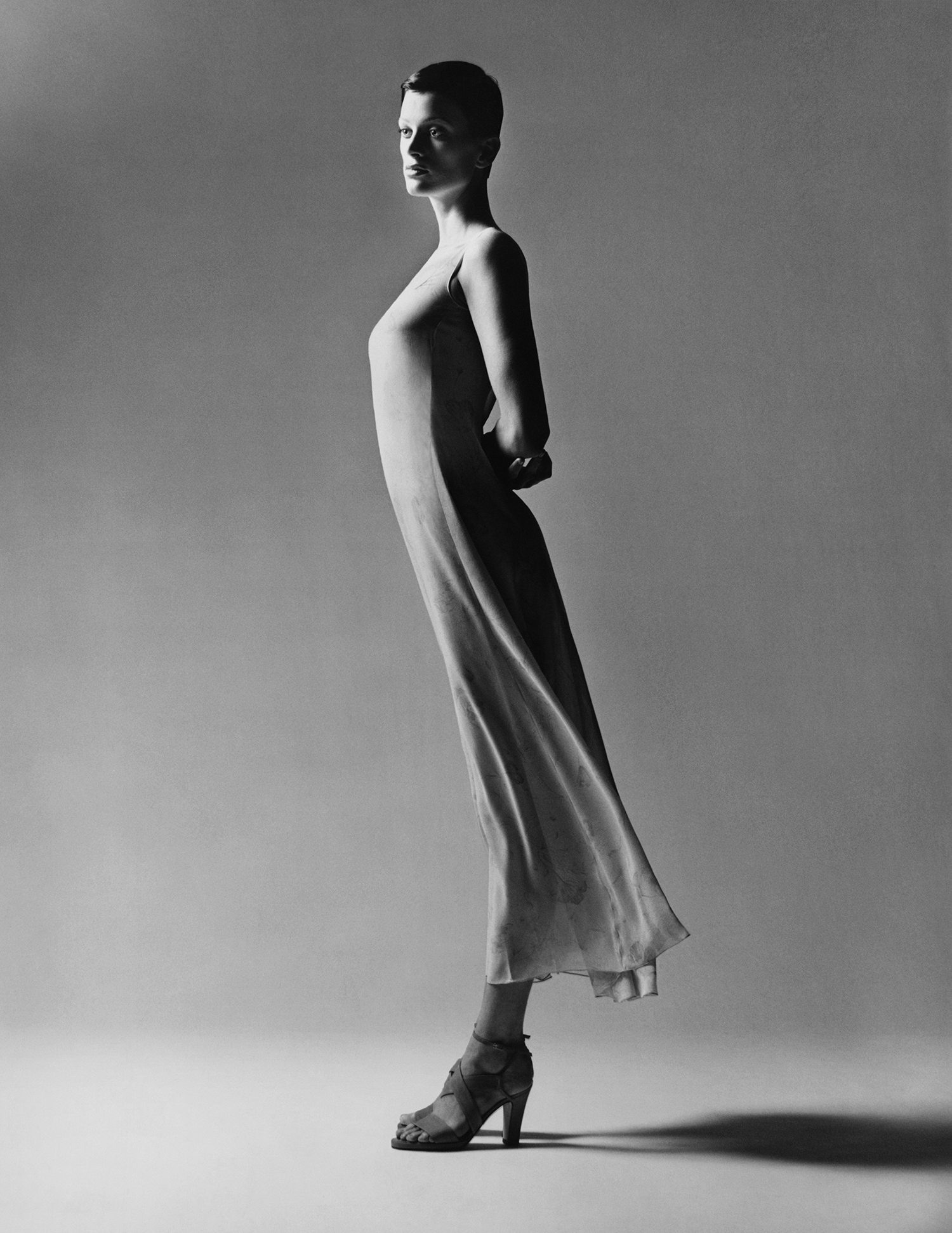 © Patrick Demarchelier, Kristen McMenamy, 1993
© Patrick Demarchelier, Kristen McMenamy, 1993
Was marketing research and all that integral to your campaigns and product launches?
I would always create the product first. We would do market studies with fragrances, for instance, to see what was trending. Was it a sexy fragrance that was going to be the next big trend? Was it a romantic fragrance, like Eternity, which was floral? We did research especially in the world of fragrance, because there you’re selling an idea. You look at it – it’s just liquid, and a bottle – but the scent has to be what people will want. My role was to apply it to my life. If it was
Obsession, it was about me at Studio 54 being obsessed with partying and doing things that I shouldn’t have been doing. If it was Eternity, it became about life continuing on to children and grandchildren. No one sold perfume with children. It used to be, when I started in the fragrance world, a typical fragrance advertising would be a young, pretty thing, walking through fields meadows someplace by herself. I used to think, “I don’t know if that’s why people would buy fragrance, to walk by themselves in a field of daisies?” No. I said, “It has to do with attracting a man,” so I always did men and women in the advertising for all fragrances. The campaign, whether it’s been choosing the name of the fragrance, or choosing the photographer, or the model, it really came from me. Maybe I was given this gift when I was born, of knowing how to do these things. Often I would get an emotional reaction. When I edit film – and Bruce Weber shot more film than anyone, ever – I would edit thousands of pictures. In working with people like Bruce, what would happen as I’m editing, I get an emotional reaction. My heart would start beating faster.
That was the key – the emotional reaction?
Yes. Totally.
Of all the talent you’ve worked with, which of them will always have a special place in your heart, Calvin?
You know, no one’s ever asked me that before. Which one…it’s hard to say one person. I’ve worked with just really brilliant people…I mean, I worked with Irving Penn! Let me tell you, my discussions with Penn were most memorable because he was so tough and people were terrified of him. The magazine editors, the people who did the shoots, they were so nervous around him. I didn’t intimidate so easily. I found him to be just a brilliant, brilliant photographer and I took such joy in working with him and listening to him. He was an artist. He and I sat in my studio and I would go to introduce the first perfume we did and the cosmetics that went along with it, in this red Bakelite packaging. I showed him the product – the makeup container and all the different things we were doing – and it was all in a beautiful shade of red. He said to me, “These are really something.” He said, “No one uses Bakelite anymore. They use cheap plastic.” Bakelite was something from the ‘30s and ‘40s, but it had a quality to it. You felt it. You knew that there was something special about those packages. He, then, sat next to me and he started to draw. He drew what the ad would be. He was just genius, as was Dick Avedon, in his way…genius, and Bruce Weber, to this day is still brilliant. How does one say one is better than another? They’re all different, but they’re all great.
At the end of the day, Calvin worked with all the greats because he was great himself.There was, obviously, a time when anybody who was anyone wanted to work with you…
Oh, I didn’t ever think that way, or even was aware. I’m becoming more aware of this now that I’m talking to you and you’re asking me questions. It’s different now than it was, and I’m learning what people thought about me. When I was working on the book, I thought, “Is anyone going to really be interested in this, other than Kelly [Klein] and Anna Wintour?” I didn’t know. I always tell students this, “If you’re insecure, act as if you’re very confident, because you’re never going to get anywhere if you show insecurity.” We all feel insecure. That’s a normal human emotion, but you have to convince people of what you believe in and chances are if you believe in something, it’s probably a good thing. You just have to convince others through your own confidence. I was just lucky with so many things, that I instinctively knew what model, what photographer.
You hit the nail on the head right there, Calvin – instinct. The gut instinct that you possess.
You’re right. It is gut instinct. That’s exactly what it is.
And it is still has no equal! It is one of a kind. That’s deft instinctual touch to titillate popular culture is just the most incredible gift! It is something that you have to be born with. It is something that’s part of your core, and it served you well…very, very well!
Oh, my God. George, that is so sweet. That’s so adorable. You made my day! (Laughter)
(Laughter) And you have made mine Calvin Klein! Thank you!
Thank you George! This was so nice, I really enjoyed it!
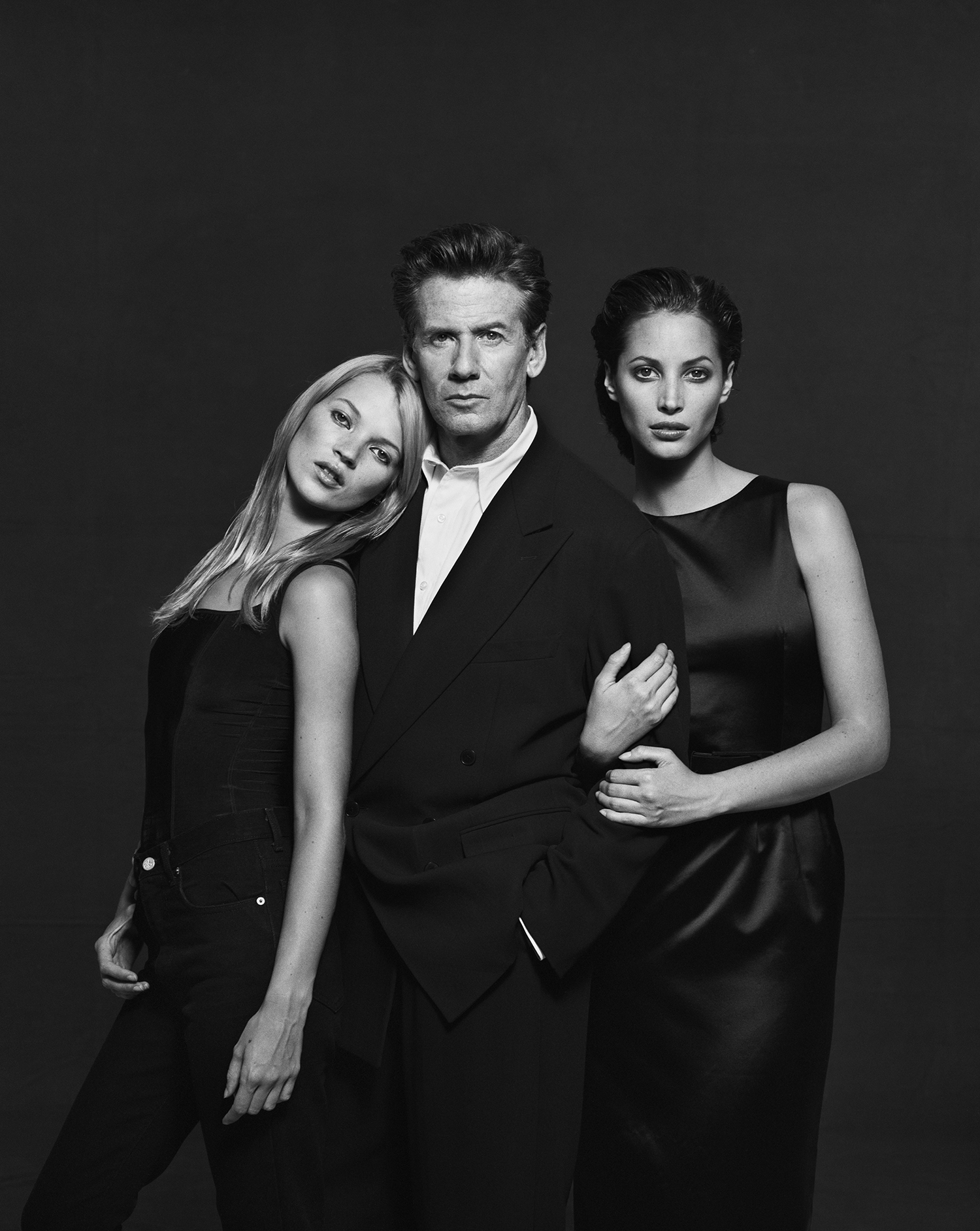 © Peter Lindbergh – Courtesy of Peter Lindberg, Paris /Gagosian Gallery
© Peter Lindbergh – Courtesy of Peter Lindberg, Paris /Gagosian Gallery
George Wayne is an Associate Editor at Interview and the first Contributing Editor at Allure magazine, George is best known for his GW Q&A’s, which twenty-two years later remain the must-read column in Vanity Fair. His beat remains celebrity culture and the whirly world of fashion, music and style.
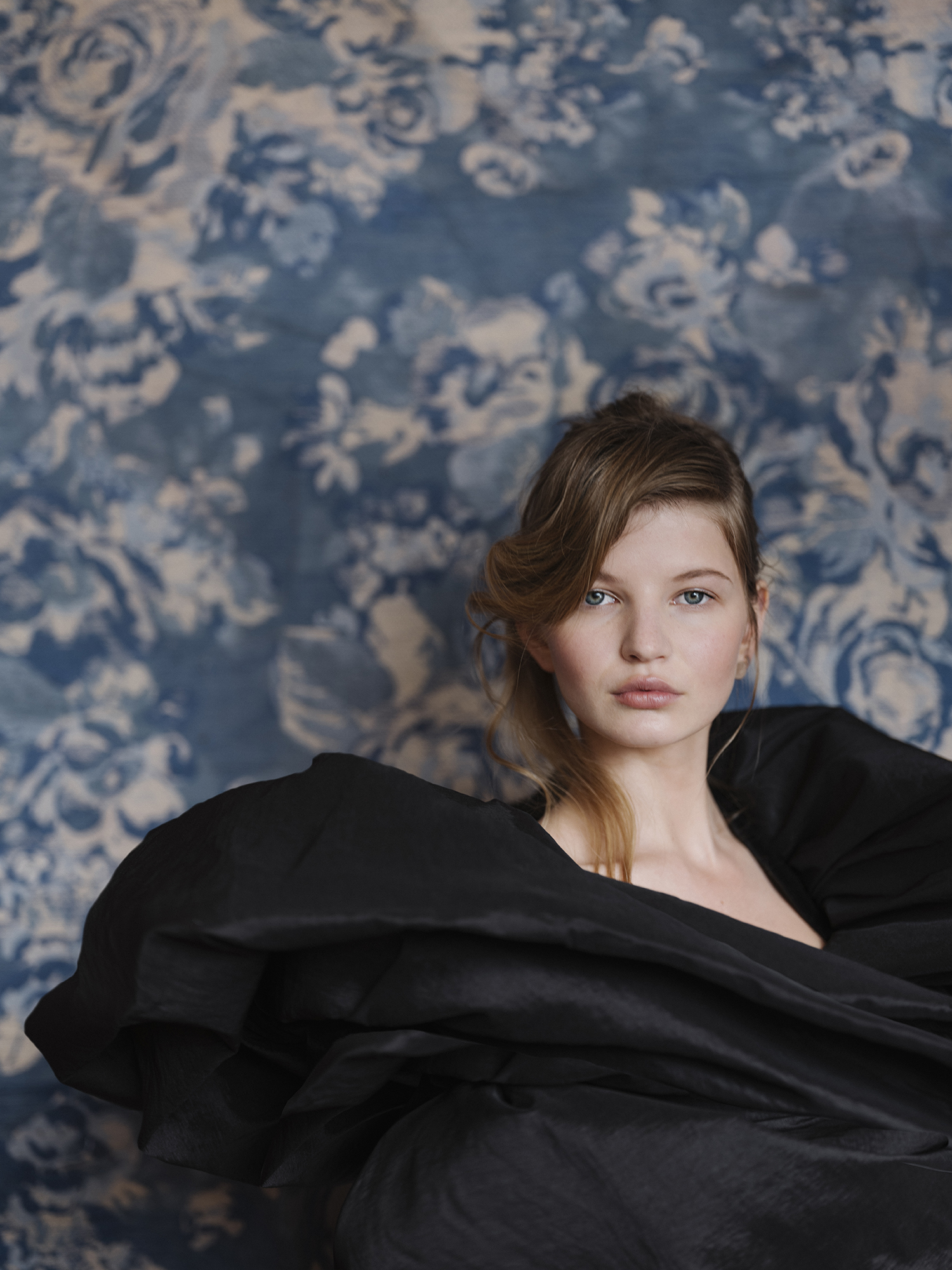
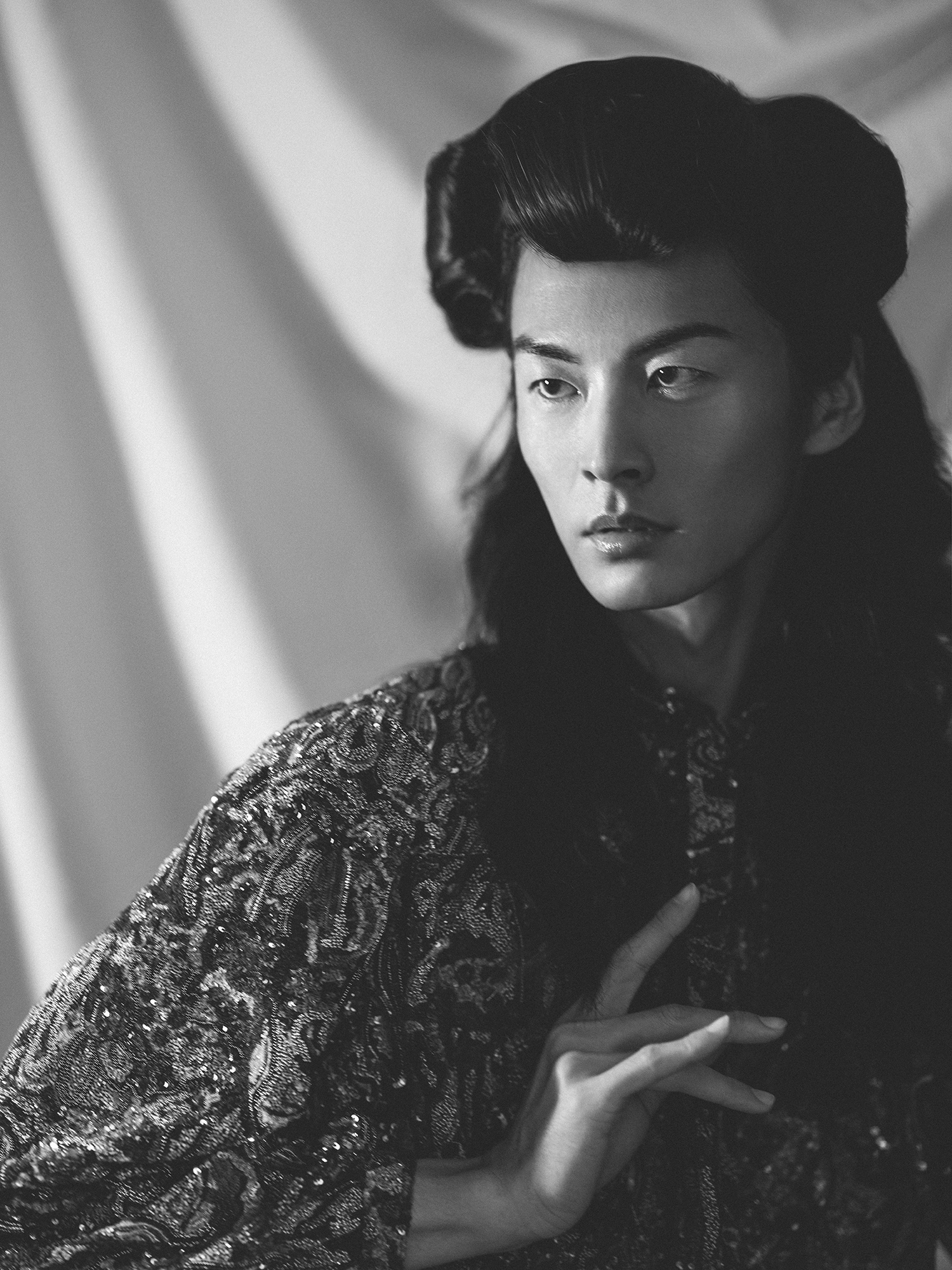

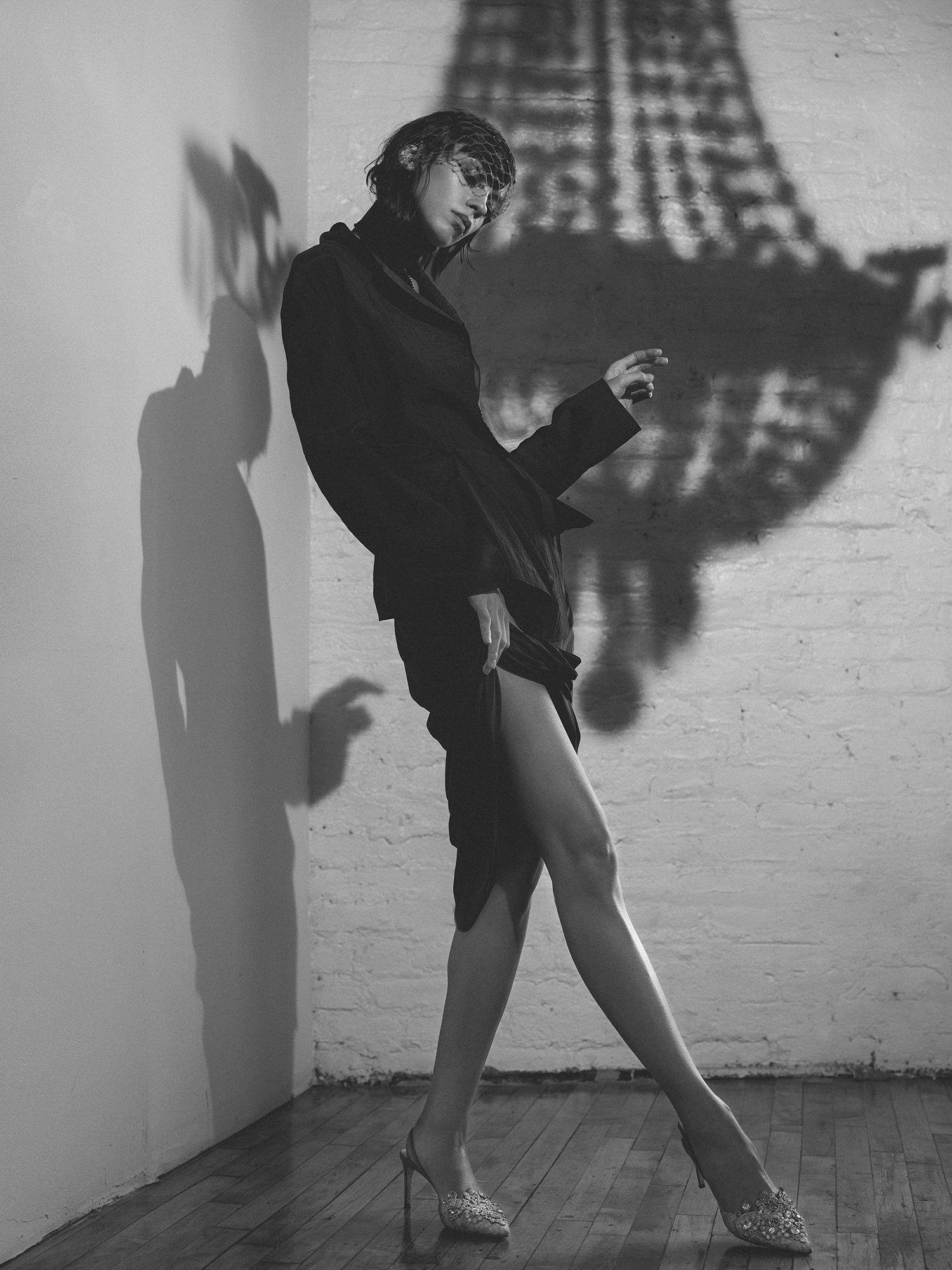
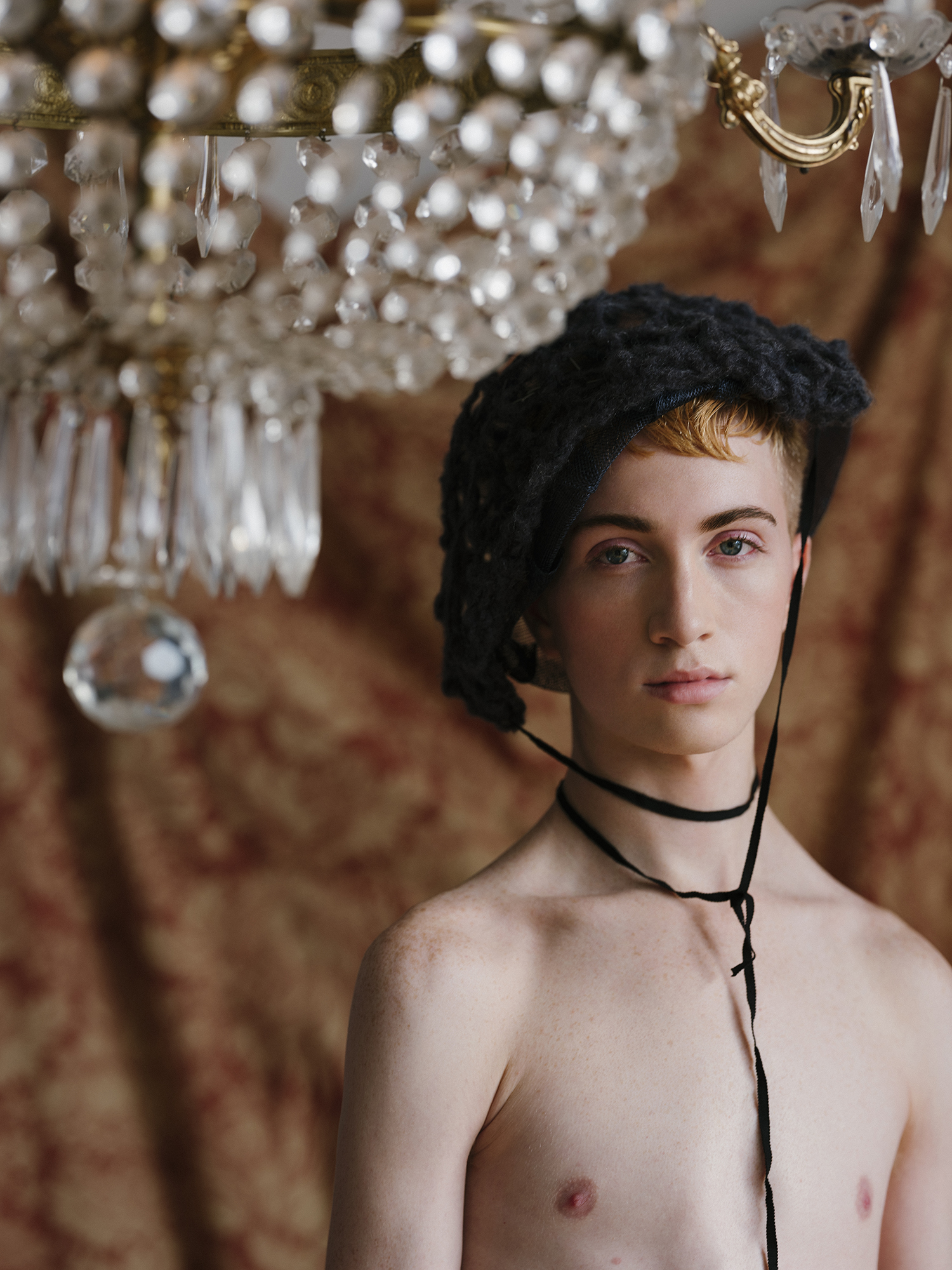
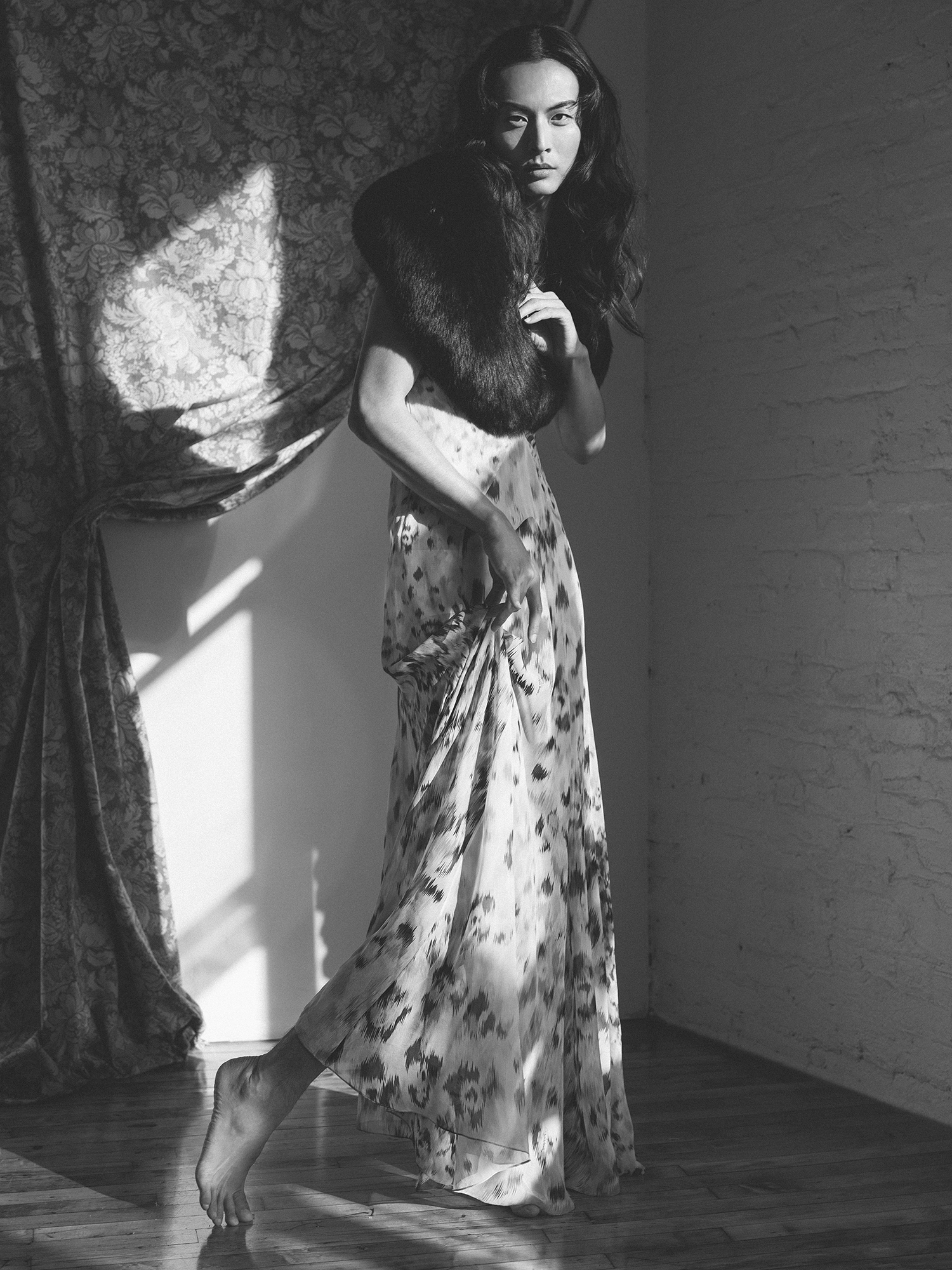
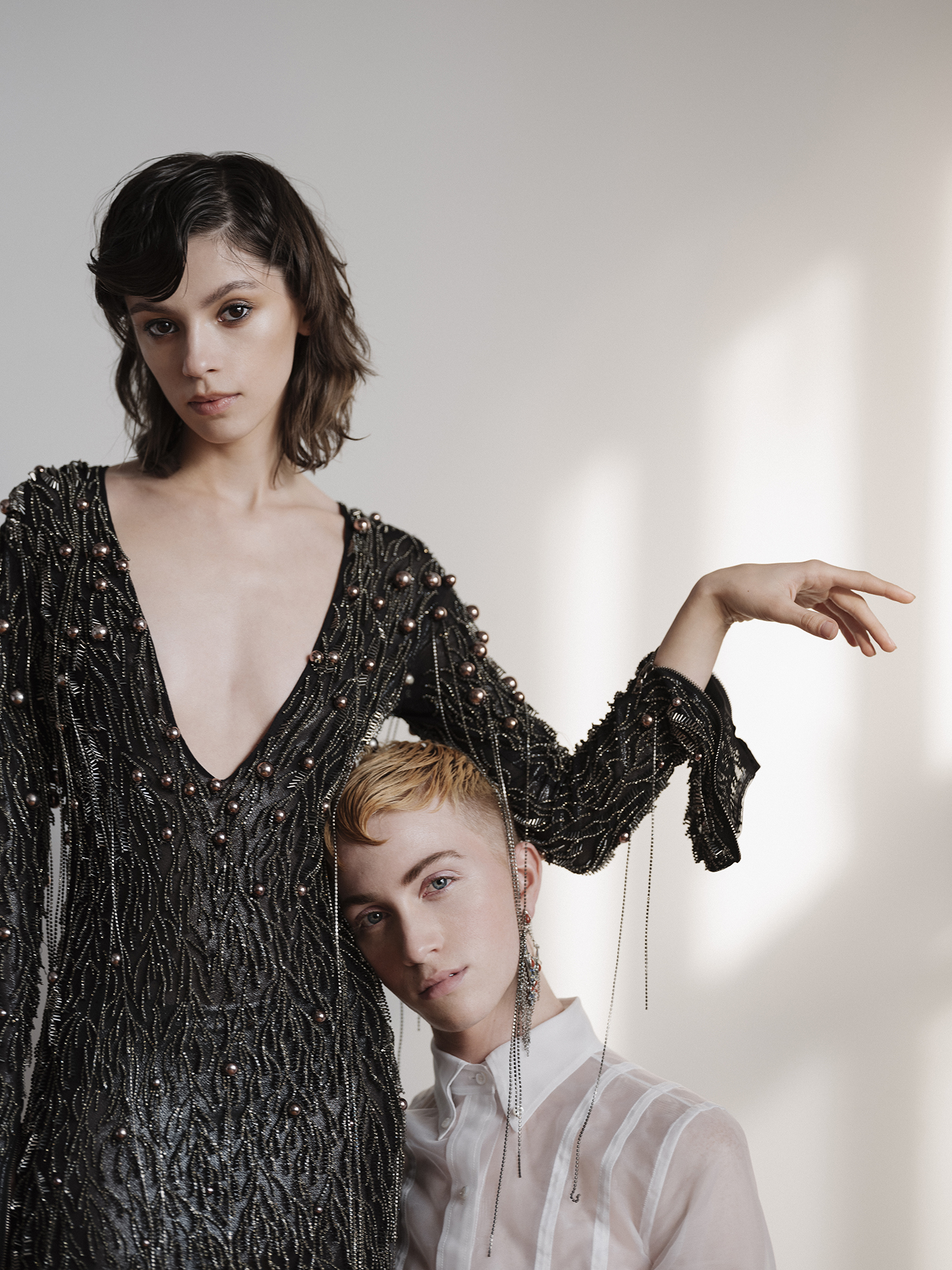

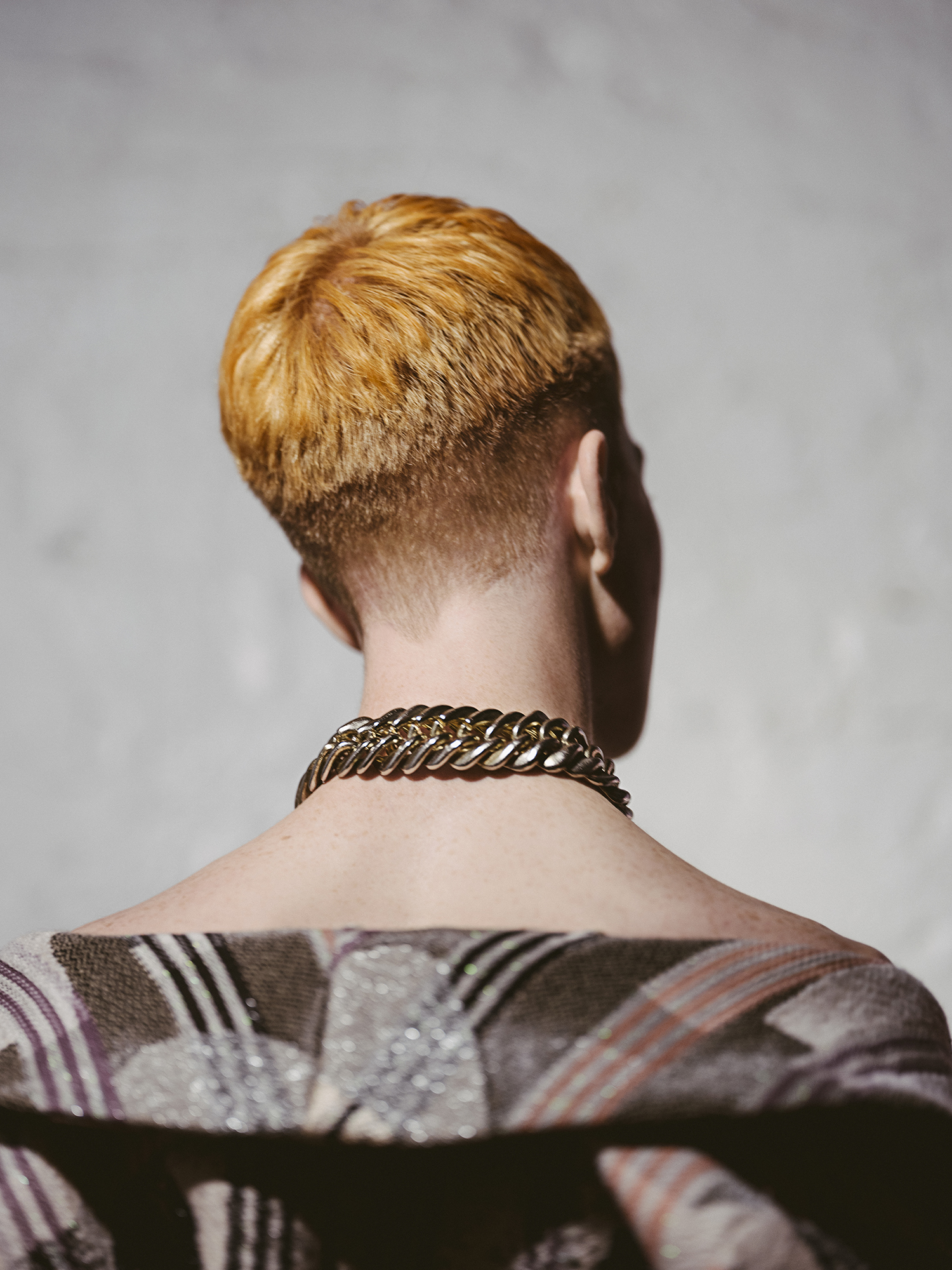



 © Mario Sorrenti, Natalia Vodianova, St. Barts, 2003
© Mario Sorrenti, Natalia Vodianova, St. Barts, 2003 © Bruce Weber, Tom Hintnaus, Santorini, 1982
© Bruce Weber, Tom Hintnaus, Santorini, 1982

